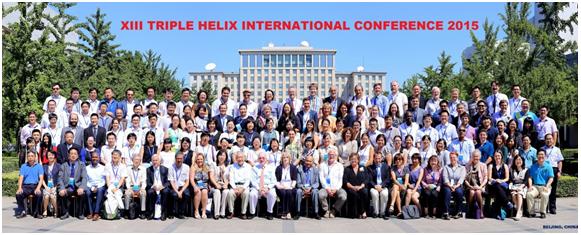
On August 21, 2015, the Triple Helix International Conference 2015 was successfully held in ShundeBuiling ,Tsinghua School of Economics and Management,jointly organized by the research center for technological innovation, Tsinghua university and The Triple Helix Association (THA). And it’s the thirteenth in a series of annual conferences that began eighteen years ago, after London, Bandung, Silicon Valley, Madrid, Glasgow, Singapore, Turin, Copenhagen/Lund, Rio de Janeiro, New York, and Amsterdam, and also the first time held in China. The conference theme was: “Academic-Industry-Government Triple Helix Model for Fast-Developing Countries”, and about 180 professors and students from more than 70 institutions in the innovation area attended the meeting from China, the United States, Britain, Russia, Japan, the Netherlands, South Korea and other dozens of countries.
Professor Qing-ruiXuwho is the honorary adviser of theRCTI academic committeeand Chinese Academy of Engineering fellow, delivered a welcome speech, with a brief review of the development process of the Triple Helix theory, and warm welcome to all the participants.
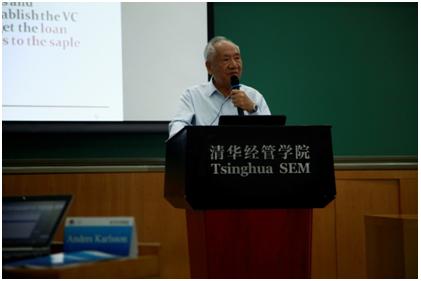
Lots of famous experts made the keynote speeches, including Prof. Henry Etzkowitz who is the president of Triple Helix Associationandsenior fellow of Stanford university, Ms. Debra Amidon who’s the founder and CEO of ENTOVATION International Ltd, Mr. NaviRadjou who’s the Innovation and Leadership AdvisorPalo Alto, California, USA and a fellow atCambridge Judge Business School, Prof. LoetLeydesdorff who is the co-founder of THA and the professor at University of Amsterdam, Prof.TariqDurrani who’s the vice president of the Royal Society of Edinburgh, Prof. WimVanhaverbeke who is the professor at Hasselt University, Mr. Anders Karlsson who is the vice president of Global Academic Relations, Elsevier, Mr. Tao Wang who’s the president of Yangtze Delta Region Institute of Tsinghua University, Prof. Jin Chen who is the director of the research center for technological innovation of Tsinghua university. 64 speakers had given academic lectures in 5 differentsessions: Advancing Triple Helix Theories, the Changing Role of Government in Innovation Systems,Entrepreneurial University and Triple Helix’s Development,Science, Technology and Innovation Policy,University and Industry Relationships,withprofessor Woo Park who’s the professor at Yeungnam University, professor Chux Daniels at the University of Sussex, professorPohKam Wong at the National University of Singapore included.
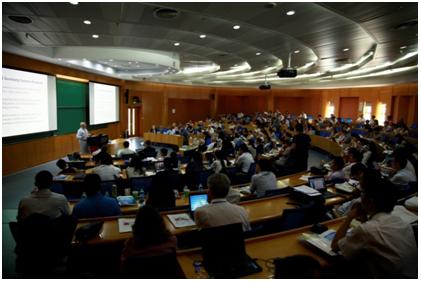
Prof. Jin Chen, the chairman of the conference, professor Qing-ruiXu, and professor Henry Etzkowitz respectively presented 11 participants with the Best Paper Award, and presented cash prizes for the two Best Student Paper Award winners, with the chair of Prof. XudongGao, the vice president of THC 2015 and the deputy director of the RCTI of Tsinghua University on the evening of August 22.
By the noon on August 23, the THC 2015 with a three-day sessions ended with a great success. And then after the meeting, all the guests from both home and abroad watched a special traditional culture performancewith Chinese characteristics inLaoshe teahouse.
Summary of Keynote Speech
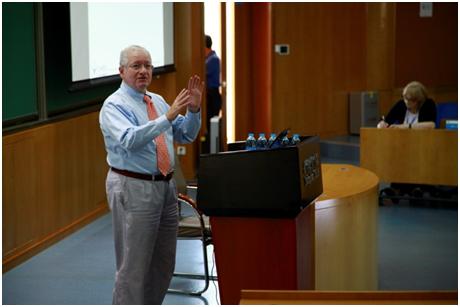
Keynote Speaker: Prof. Henry Etzkowitz
Topic: Innovative Governance: Making a Triple Helix Innovation System
Abstract: A triple helix of university-industry-government relations, as the basis of an innovation model, has originated from both statist and laissez-faire societal regimes. The US experience took place in the context of skepticism of government’s role. Nevertheless, at various historical junctures, such as the mid 19th century Civil War, World War II and in response to the 1957 Soviet Sputnik success, government played an activist role to address specific national issues. For example, direct links in the U.S among university, industry and government formed during the 2nd World War were dismantled immediately after the war but have since been revived in a looser format. The post-war creation of innovation hubs in Boston, Silicon Valley, Research Triangle and elsewhere emanated from pre-war triple helix interactions in New England, a region unique in the early 20th century for its concentration of academic resources.
Interaction among Triple Helix actors creates the dynamics for an innovation system responding to different societal regimes. An innovative dynamic system comprises bottom up, top down and lateral initiatives, among university, industry and government, translating research into use and societal problems into collaborative opportunities to invent new innovation methods. In the US ideological opposition to government-industry relationships is reduced by an indirect format of running such links through the university. This has had the consequence of increasing the university’s salience as an innovation actor. In Europe, a leading role for government is accepted in many countries, especially those following the French Colbertist tradition, with industry seen as the main innovation actor under government’s guidance.
What are the implications of US triple helix experience, arising from a strong Civil Society base for contemporary fast developing countries, many with a weak Civil Society? Government is strongly involved in US innovation policy, both directly and indirectly. But why was this policy logic established and how did resistance to its emplacement paradoxically strengthen implementation, transforming a public/private double helix into a university-industry-government triple helix during the early to mid 20th century? As the US was the fast developing country of the 19th and early 20th century, China is the contemporary fast developing country but with serious issues accompanying this rise. How to make development sustainable in fast developing countries, as well as in late developing and already developed countries, is a significant topic for future decades.
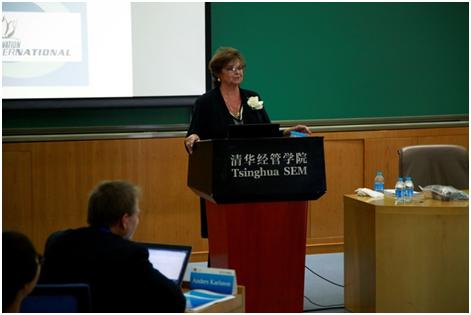
Keynote Speaker: Debra Amidon
Topic: Vision of Knowledge Innovation: Vignettes from the Past, Present and Future
Abstract: Over twenty years ago, there was minimal interaction across the sectors – government, industry and academe. Several initiatives were born, including The Triple Helix. We have observed, if not participated in, the creation of a variety of funding programs, science and technology parks, collaboratories and most recently the evolution of Knowledge Innovation Zones in the form of Digital Cities, Internet Villages, Knowledge Regions and more. These zones cross technologies, industries, geographies and even virtual communities. They require new methods to measure progress – value drivers in a new Triple Knowledge Lens for the Economy, Society and infrastructure. Let us examine where we have been, where we are and where we might be headed, including the new game in town – the art of collaborative advantage.
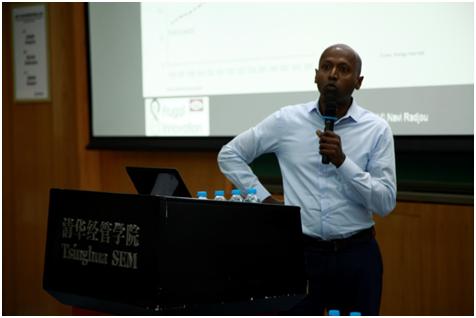
Keynote Speaker: Navi Radjou
Topic: Frugal Innovation: An Inclusive and Sustainable Growth Strategy
Abstract:Frugal innovation is the ability to "do more— and better —with less". It is an inclusive and sustainable growth strategy that enables businesses and governments to create more economic and social value using fewer natural resources. Long practiced in fast-growing economies like China, India, Africa, and Brazil, frugal innovation is now being adopted in developed economies like US, Europe, and Japan to respond to the needs of cost-conscious and environmentally-aware citizens. In this presentation, Radjou will describe how frugal innovation is rapidly becoming a global phenomenon driven by mega-trends like peer-to-peer sharing, circular economy, and the Maker movement. Radjou will show how policy-makers and CEOs can use frugal innovation to reconcile reconcile inclusive growth and sustainability. He will describe how leading engineering and business schools worldwide are training next-generation leaders on frugal innovation. He will explain how increased government-academia-industry collaboration across regions can accelerate adoption of frugal innovation that can improve quality of life of all citizens worldwide and build a sustainable planet.
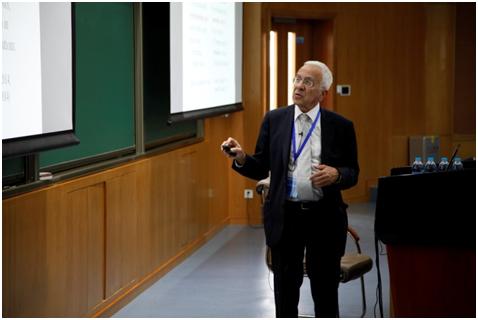
Keynote Speaker: Loet Leydesdorff
Topic: The Triple Helix of Knowledge Production, Wealth Generation, and Normative Control: A Neo-evolutionary Model of Innovation Ecosystems
Abstract:When three sub-dynamics can operate as selection environments on the variations among one another, a communication field can be generated that proliferates auto-catalytically using each third actor as a feedback or feed forward operating on mutual relations in clockwise or counter-clockwise rotations. This model improves on the neo-Schumpeterian models of innovation systems in evolutionary economics and technology studies, while these models assume a dialectics or co-evolution, for example, between trajectories and selection environments. By extending the Lotka-Volterra equations from two to three dimensions, Ivanova & Leydesdorff (2014) proved the possible emergence of a communication field (“overlay”) as an emerging (fourth) subdynamic. In the communication field new options can be generated by sharing meaning provided to the events (Leydesdorff & Ivanova, 2014). This extension of innovative options can be measured as redundancy in terms of bits of information. Petersen, Rotolo & Leydesdorff (in preparation) analyzed Medicals Subject Headings (MEDLINE/PubMed) of approximately 100,000 articles in three research areas including technological breakthroughs in medical innovation (honored with Nobel Prizes in Physiology and Medicine) in terms of “Diseases” (demand), “Drugs and Chemicals” (supply), and “Techniques” (control). Periods of synergy (operationalized as redundancy) can be distinguished from periods in which outward exploration prevails. Innovation systems (e.g., at national or regional levels, but also sectorial ones such as in medicine) provide institutional mediation between wealth generation, knowledge production, and governance as different perspectives. In the case of China, Leydesdorff & Zhou (2014) found, for example, that the four municipalities play a mediating role above expectation between knowledge production and wealth generation. Note that the three dimensions can differently be operationalized depending on the research design (e.g., as “university,” “industry,” and “government”); but the dimensions have to be specified as analytically independent so that the three co-variations can be measured (Leydesdorff, Park, & Lengyel, 2014).
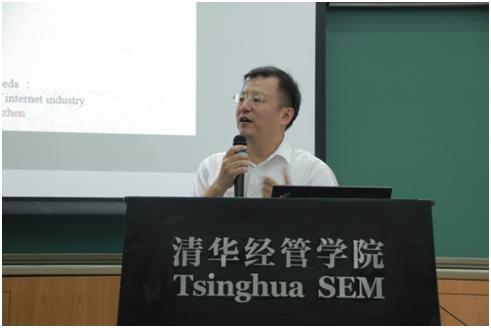
Keynote Speaker: Prof. Wang Tao
Topic: Construction of Total Ecosystem with Innovation and Entrepreneurship:The Practice Exploration of Constructing New Innovative Carrier in Yangtze Delta Region Institute of Tsinghua University, Zhejiang
Abstract: This speech mainly focuses on the construction of total ecosystem with innovation and entrepreneurship, with the case of constructing new innovative carrier in Yangtze Delta region institute of Tsinghua University. Firstly, the speech put forward the platform strategy of the university, industry and institute which serves as a new model for the Triple Helix theory, with analyzing a lot of types of innovations of region research institute, such as mechanism, management etc. And then the speech makes the case study of the Yangtze Delta Region Institute of Tsinghua University with the “Big Dipper” Model which is the integration of Government, Industry, Academia, Institution, Capital, Intermediary and Clientele, compared with the traditional Triple Helix. Then the speech concludes that the institute should fully rely on the advantage of THU Based on the demand of regional development, and construct the total ecosystem with talent, technology and resources, industry, capital and market, incubation, investment, and operation at the era of innovation and the times of entrepreneurship.
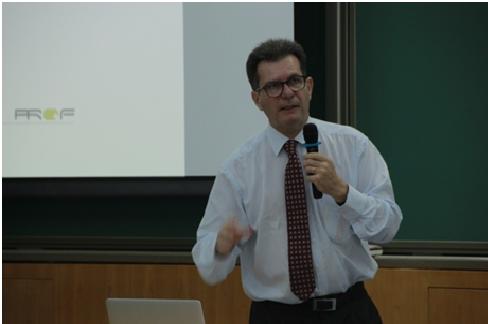
Keynote Speaker: Wim Vanhaverbeke
Topic: From open innovation to innovation ecosystems
Abstract: Open innovation – the ability of a company to source knowledge from other organizations and to find external routes to market for its own unused knowledge – is rapidly expanding as a management practice around the globe. The concept will further gain popularity as it has been mainly applied in the context of large manufacturing companies but it is equally applicable to services. Its application range is much broader than originally thought: Several companies – in the FMCG sector for instance – do not only collaborate on technology, but build profitable new businesses by combining their own assets with complementary assets of their partners including, brands, access to suppliers and route to markets. This extended version of open innovation is unexplored by most companies. Finally, companies can apply open innovation, be it in an indirect way, to commodity markets: this requires a broadening of the scope from technological knowledge to all possible strategic drivers in an industry. By extending open innovation in this way I connect this field of research with the emerging innovation ecosystems literature. I present different types of innovation ecosystems and focus on the importance of the organisation and the orchestration of ecosystems.
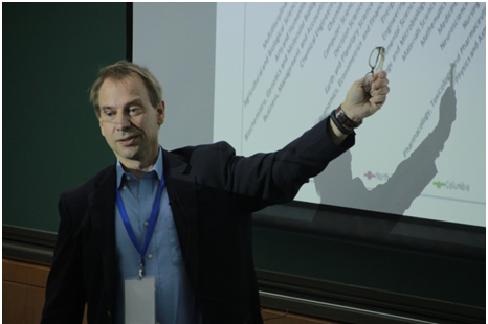
Keynote Speaker: Anders Karlsson
Topic: University Industry Interactions in a Regional Context - Recent case studies mapping competiveness of European Cities, and US states
Abstract: In the knowledge economy, the role of the entrepreneurial university as driver of economic growth is gaining increasing recognition. Universities provide a region with an educated work-force, they contribute to local employment and local economy, as well as to innovation in the local, regional or wider geographical context. In a (institutional) triple-helix perspective, this represents a shift to a balanced triple-helix model, with universities acting in partnership with government and industry.
Traditionally, university-industry interaction is captured for instance via co-authored publications, patents, reference to publications in patents, joint industry contracts, technology licensing, or the number of start-up companies exiting from the university. A challenge is to put the results in context where a comparison can be made of the strengths between different research areas and cities/regions of different size, allowing cities or regions to be benchmarked against each other without distortions. Using Scopus, the world’s largest abstract and citation database, as well as patent- and other data bases, Elsevier is increasingly supporting with comparative benchmarking to the benefit of triple-helix actors, e.g. policy makers, industry and other businesses, such as real-estate developers obtaining insights for policy or investment decisions.
We will among topics to be discussed highlight two recent major studies done in partnership, one European-focused study done together with Urban Innovation Network comparing eleven major cities, among them Berlin, Stockholm, Brussels, Manchester and Amsterdam, a second United States-focused study, looking at the competiveness of the state of Illinois done in partnership Illinois Science &Technology Coalition (ISTC). We will examine several aspects of the Triple-Helix knowledge exchange process, such as capacity to attract and retain talent, capability to commercialise research in terms of patents and patent citations. Of special interest are novel indicators of proxies for scientific quality in terms of citations and downloads of scientific works, which allows for a comparative benchmarking of cities of regions.
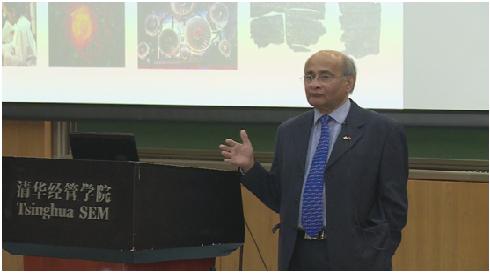
Keynote Speaker: Tariq S Durrani
Topic: The Role of Learned Societies and Professional Organizations in Nurturing Triple Helix Interactions for Knowledge Exchange
Abstract: Traditionally, learned societies and professional organisations are scholarly entities that exist to promote an academic discipline or profession, through conferences, invited lectures, and academic journals that record original research. Learned societies also play a key role in promoting international exchanges and collaborative research.
This presentation will highlight the emerging role of learned societies in promoting Triple Helix interactions. Through examples, the Address will discuss new paradigms for international cooperation which bring together industry and academia, catalysed by support from government, to develop initiatives that lead to contributions in support of economic growth; under the aegis of learned societies.
Using the experience of the Royal Society of Edinburgh, the Royal Society (of London), and the Royal Academy of Engineering, the presentation will illustrate the efficacy of the new approach. Working with Technology Innovation Centres, Catapult Centres, and Innovate UK, activities will be illustrated that have led to innovation, technology transfer, knowledge exchange and commercialisation.
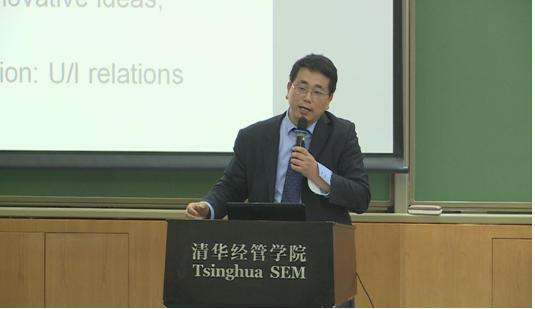
Keynote Speaker: Prof. Jin CHEN
Topic: University Industry Strategic Alliance in China
Abstract: This speech mainly focuses on the topic of the University Industry Strategic Alliance in China, including three parts: innovation and China’s Economy, university and Industry Relation in China, and university industry strategic alliance for China. China is on the transition from technology follower to technology leader. In order to maximize the firm’s collaboration efficiency, firm should place great attention on the use of unabsorbed slack resource, enabling better cooperation and technology transfer between firms and knowledge partners. And the speech puts forward four policies to promote university/industry relations in China: implement collaborative innovation strategy, form a new university strategy, adjust university research strategy and provide high incentive for technology transfer. Then comparing with the west strategy, the speech provides new strategy for China, such as collaborative innovation, innovative university. At last, the speech concludes that strong university industry strategic alliance in China should be provided.
Best Paper Award
|
THC2015_001
| Ana Carolina Kayser, Douglas Wegner and Rafael Stoffel Dal Ri
| Management of Collaborative Innovation Projects Between Universities and Companies Analisys
|
THC2015_017
| Ng Su Juan Crystal, Ho Yuen Ping and Wong Poh Kam
| Research orientation and University-Industry linkages: An exploratory study of researchers at the National University of Singapore
|
THC2015_033
| GAO Yuchen, WANG Jingyi and HU Yimei
| Private-Owned Venture Capital’s Investment on University Spin-Offs: A Case Study of Tsinghua University Based on Triple Helix Model
|
THC2015_037
| Yuen-Ping Ho, Chang-Chieh Hang, Yi Ruan and Poh-Kam Wong
| Transferring Knowledge from PRIs to SMEs via Manpower Secondment: The Case of Singapore's GET-UP Program
|
THC2015_043
| Inga Ivanova, Øivind Strand and LoetLeydesdorff
| The Efficiency of Triple-Helix Relations in Innovation Systems: Measuring the Connection between a Country’s Net Income and its Knowledge Base
|
THC2015_059
| Julio A. Pertuze
| How do Industry University Relationships Coevolve with Firm Strategy?
|
THC2015_083
| Marina van Geenhuizen, Qing Ye and Mozhdeh Taheri
| Hidden Activity of University Spin-offs in Triple Helix Networks: The Role of Mediator
|
THC2015_094
| Nenad Penezic and Jelena Jesic
| Triple Helix Model Development in Serbia: The Case of Educons University as an Entrepreneurial University
|
THC2015_104
| Riccardo Fini, Rosa Grimaldi and Azzurra Meoli
| Institutional and Contextual Factors as Fonts of Entrepreneurship: The Case of Italian University Departments
|
THC2015_128
| Yuan-Chieh Chang, Phil Yuhsing Yang, Tung-Fei Tsai-Lin and Hui-Ru Chi
| Developing Pasteurian Orientation for Entrepreneurial Universities: Antecedents, Mediation and Performance
|
THC2015_131
| Han Zhang, Yuzhuo Cai and Zhengfeng Li
| Towards a typology of university technology transfer organizations in China
|


